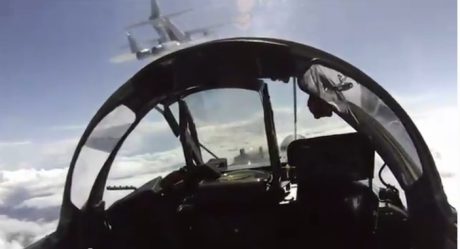
Here are some great aerial refueling shots taken with a telescope.
To maintain currency the pilots have to train numerous procedures so that they simply do not forget how to execute them. Aerial refueling is one of the processes that remain vital for tactical aviation, with advantages of this procedure being obvious in operational context.
Yesterday, Jan. 20, 2020, the TSA8 zone (formerly known as SARA) in the Greater Poland district has been used to conduct aerial refuelling and tanker operations, involving the Royal Netherlands Air Force KDC-10 tanker and the Polish F-16 jets stationed at the Łask and Krzesiny airbases. The tanker stayed in the area for more than an hour, allowing the Polish pilots to maintain currency in AAR procedures and renew their AAR credentials.

The photos in this article, taken by Gniezno-based Tomasz Urbański, depict the training. Curiously enough the imagery has been captured from the ground, with the use of a Synta 8 inch telescope coupled with a Canon 77D crop sensor DSLR. To extend the focal length Tomasz also used a Televue Powermate 2x Barlow lens. The images were shot at 1/500th of a second with ISO speed of 200. Overall, the focal length of setup as such is 3840 mm. For the sake of comparison, most of the air show photographers use lenses around 500 to 600 mm range – thus taking photos using this method is quite challenging, given that the telescope also does not have any autofocusing mechanism, let alone image stabilization.

RNAV Spotting, as this type of photography is referred to, has become quite popular in Poland, since acquisition of a Synta telescope is relatively cheap, when compared to an equivalent telephoto lens with a comparable focal length – and, undoubtedly, it can be spectacular, as we can see on the shots provided by Tomasz. However, one should remember than when taking shots as such, one needs to account for atmospheric conditions even more – heathaze or dust in the air can really ruin the quality of photographs – thus, it is best to take pictures as such in the wintertime, when the air is cold and has a lot of clarity to it.




